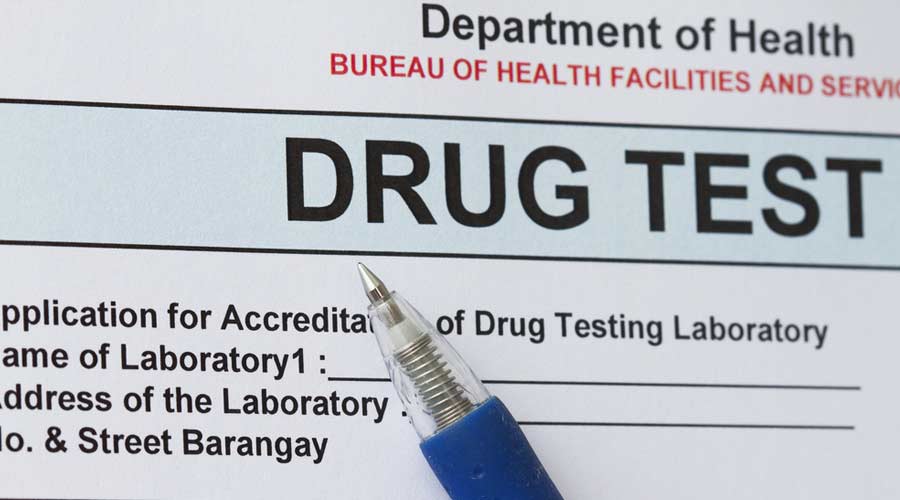
The rate of positive drug test results among America’s workforce reached its highest rate last year since 2001 and was up more than 30 percent in the combined U.S. workforce from an all-time low in 2010-2012, according to a new analysis released by Quest Diagnostics, the world's leading provider of diagnostic information services.
The study, based on more than 11 million de-identified urine, hair and oral fluid drug test results collected between January and December 2021, offers revealing insights into workforce drug use as employers grapple with creating safe, healthful work environments amid an ongoing recruitment and retention crisis.
The overall positivity rate in the combined U.S. workforce, based on nearly nine million urine drug tests collected between January and December 2021, was up in 2021 to 4.6 percent compared to 4.4 percent in 2020 and up 31.4 percent from the all-time low of 3.5 percent just 10 years ago (2010-2012). The combined U.S. workforce includes the general U.S. workforce of mostly company-policy testing by private employers as well as the federally mandated, safety-sensitive workforce, which includes federal employees and the transportation and nuclear power industries, and can include workers such as pilots, truck drivers, train conductors and others required to drug test under federal legislation.
Overall positivity in the federally mandated, safety-sensitive workforce based on nearly 2.7 million urine drug tests stayed even year over year (2.2 percent in 2020 and 2021) and was 4.8 percent higher than 2017 (2.1 percent in 2017 versus 2.2 percent in 2021). In the general U.S. workforce, positivity increased 1.8 percent (5.5 percent in 2020 versus 5.6 percent in 2021) and was 12 percent higher than in 2017 (5.0 percent in 2017 versus 5.6 percent in 2021) and up each of the last five years.
The new findings of the Quest Diagnostics Drug Testing Index were unveiled this week at the Drug & Alcohol Testing Association 2022 Conference taking place March 30-April 2 in Louisville, KY.
Despite years of decline, positivity rates increased in several federally mandated, safety-sensitive workforce testing categories
After five years of steady declines in several drug categories, positivity rates based on urine drug tests for the federally mandated, safety-sensitive workforce increased in 2021. Of note, marijuana increased 8.9 percent (0.79 percent in 2020 to 0.86 percent in 2021), amphetamines increased 7.8 percent (0.64 percent in 2020 to 0.69 percent in 2021) and cocaine increased 5.0 percent (0.20 percent in 2020 to 0.21 percent in 2021).
Positivity for marijuana continues upward climb in general U.S. workforce
Positivity rates for marijuana in the general U.S. workforce, based on more than 6 million urine tests, continued an upward climb, increasing 8.3 percent (3.6 percent in 2020 versus 3.9 percent in 2021), the highest positivity rate ever reported in the DTI. Over five years, positivity for marijuana in the general U.S. workforce increased 50 percent (2.6 percent in 2017 versus 3.9 percent in 2021).
In oral fluid testing, overall workforce drug positivity decreased, but increased for marijuana, methamphetamine and cocaine
In 2021, positivity in the general U.S. workforce based on oral fluid was 7.3 percent in 2021, a decline of 46.3 percent compared to 2020 (13.6 percent) and 29.8 percent compared to 2017 (10.4 percent). The drop in oral fluid-positivity (13.6 percent in 2020 versus 7.3 percent in 2021) was driven by a decline in the number of pre-employment tests that included marijuana. However, for those tests that included marijuana, the oral-fluid drug positivity rate for marijuana was 14.8 percent in 2021, an increase of 20.3 percent compared to 2020 (12.3 percent) and up 68.2 percent over five years (8.8 percent in 2017). At the same time, the positivity rate for cocaine increased 46.6 percent (0.58 percent in 2020 versus 0.85 percent in 2021), its highest spike since 2006, and methamphetamine increased 26.4 percent (0.53 percent in 2020 versus 0.67 percent in 2021), exhibiting year-over-year increases for the last 5 years.
Federally mandated, safety-sensitive workforce urine drug testing, pre-employment positivity increased 9.5 percent since 2017 (2.1 percent in 2017 versus 2.3 percent in 2021), while post-accident positivity increased 41.9 percent (3.1 percent in 2017 versus 4.4 percent in 2021). In 2021, the post-accident positivity as compared to pre-employment positivity was 79.6 percent higher (9.7 percent versus 5.4 percent) in the general US workforce and 91.3 percent higher (4.4 percent versus 2.3 percent) in the federally mandated, safety-sensitive workforce.
In 2021, urine post-accident testing in the U.S. general workforce for the drugs marijuana and cocaine the positivity rate was 63.4 percent and 266.7 percent higher, respectively, as compared to pre-employment tests. For the two groups of semi-synthetic opiate drugs – opiates (hydrocodone/hydromorphone) and oxycodone (oxycodone/oxymorphone) – in these tests, post-accident positivity was 316.7 percent and 200 percent higher, respectively, than in pre-employment testing.

 Celebrating BSCAI's 60th Anniversary eBook
Celebrating BSCAI's 60th Anniversary eBook The Down and Dirty on Cleaning in Virus Season
The Down and Dirty on Cleaning in Virus Season How Surfactant Use is Expanding in Commercial Cleaning
How Surfactant Use is Expanding in Commercial Cleaning